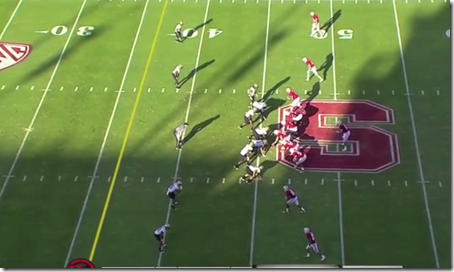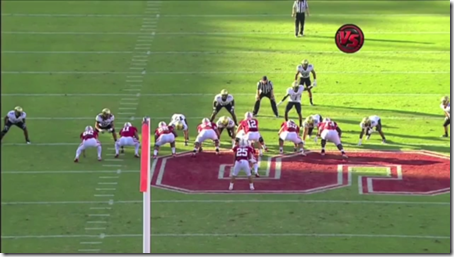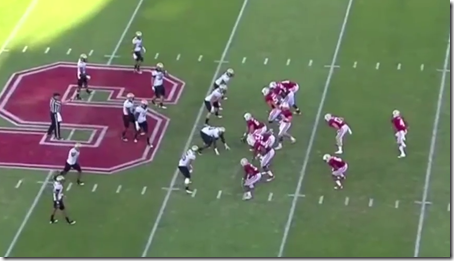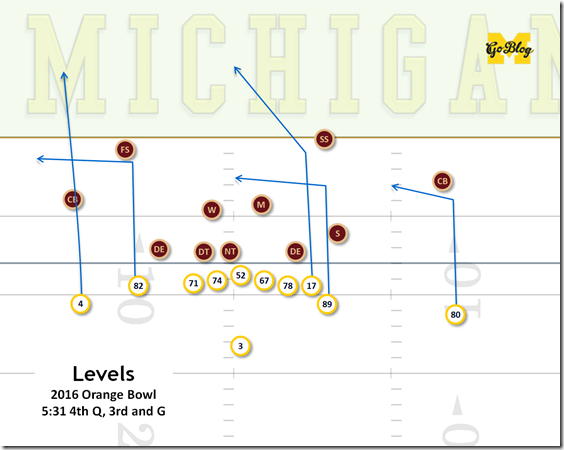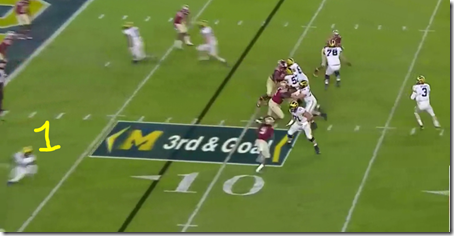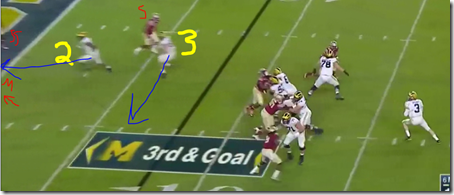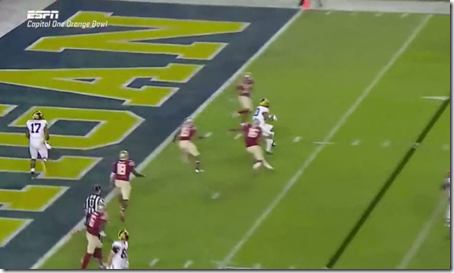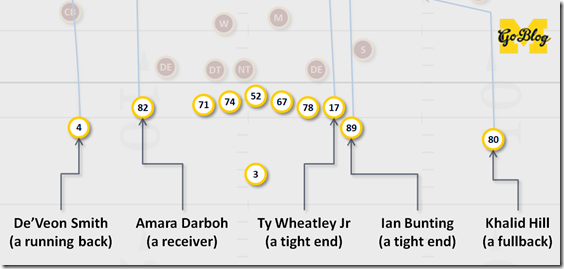---------------------------
[QUICK HURRICANE HARVEY NOTE: Major ongoing natural disasters are usually beyond our scope, but Houston has become an all-hands-on-deck situation. MGoStaff writer Alex Cook is still holed up in his apartment and has assured us he is safe. Close friend of the site Jane Coaston has family there. Over 3,000 readers are in it too.
The charities out there to deal with such things are blowing through everything they’ve got. If you’d like to help, some good charities are All Hands (they train & equip volunteers), the American Red Cross, Samaritan’s Purse (Christian, International), Food banks (that’s a list from the Houston Press), Americares (provide medicine and basic supplies), SBP (ongoing recovery volunteering) the Houston SPCA (animal rescue—bc evacuation centers don’t let people bring their pets), and NECHAMA (Jewish flood response organization I volunteered with when Dearborn and Oak Park were inundated a few years ago).
If you’d like to go down there and help the Red Cross and others above are taking on-the-ground volunteers. I can’t think of a better way to justify making that Dallas game after all.]
---------------------------
a preview
They say football is a game of inches. But in football physics space and time amount to the same thing. The inches between a tackle and a broken one, or momentum vs time for the defense to rally, are the real difference-makers. All of that scheming, development, recruiting, and training is about finding those inch-seconds. And we’ve been telling you all offseason that we think the way Michigan plans to do that is to play with some gigantic dudes who will push you off the ball, and spread ‘em out.
Maybe we should explain why.
[after the jump]
---------------------------
Spread is Power is Spread is Power is Spread
Y’all know what Harbaugh wants to do with his offense. He wants to line up one ton of meat in an I-form with a TE on the side he’s going, motion another tight end over there, then blast open a hole between two linemen, pull a guard and shoot a fullback into the same hole with a powerful running back coming through it with enough steam to run over a safety.
(Unless that safety’s so messed up by everything else he’s seen that he’s in the completely wrong gap.)
Most coaches who hang their hat on the Power-I offense—and Michigan fans remember a few of them—are hoping to have that support a relatively simple passing offense: play-action to get the linebackers and safeties on their toes when they ought to be on their hips, and bloom all of those eligible receivers into simple reads. Harbaugh will do some of that, but his passing offense is way more NFL.
Now I want you to go to 2:46 of that Fishduck video and watch the rest. If you can’t here’s the basics: The first play they show Stanford lining up in a 5-wide (0 RBs, 0 FBs, 5 WRs):
then motioning that into a Power-I (1RB, 1FB, 2TE, 1WR).
Then they do the opposite: line up in a Power-I
then motion to a 5-wide set and run the same play I led off the post with.
At Stanford they recruited and coached the team with these concepts in mind: every skill position player is a receiver and a blocker.
---------------------------
Matching Scheme to Talent
That’s not really what we’ve seen so far at Michigan. In 2015 Harbaugh and his staff walked into a roster that had played together a long time and was built for going 2- and 3-wide. Darboh and Chesson were possession and speed receivers, respectively. Butt was receiving tight end, A.J. Williams a blocky one. Sione Houma was a running fullback, Kerridge a blocky one, and Khalid Hill a catchy H-back sort. De’Veon Smith was a good power back, and became an okay pass blocker, but didn’t read gaps well and was not a smooth passing threat. More or less these gentlemen played the roles they were recruited for.
Of course the rules of football don’t necessitate such specialization. People have passing plays with four blockers and one guy in a route, or five guys running routes. When deciding which abilities to feature, you’re looking at the personnel on hand and asking if this guy’s going to be more valuable doing one thing or another.
Recent Michigan State and Wisconsin for example both had just one receiver who could reliably get open, and quarterbacks who rarely came off their first reads.
This play is to get Z the ball. The left TE and the X receiver are running their routes like basketball picks.
Those passing offenses put fewer guys in routes, and those routes were often meshes (crossing routes) or rubs to get that one guy open.
For an example of the opposite extreme, think of Purdue with Drew Brees, or the modern NFL offenses where Tom Brady routinely has five slippery guys in routes and can tell by the subtle differences in a defender’s tooth enamel where he’s going with the ball before the pass rush arrives.
So let’s go over the composition of Michigan’s 2017 offense:
- Their offensive line is young and bulky. If they can surprise you they’ll maul you; if you surprise them, or, like, speed rush, they’re liable to crumble.
- Their top tight end (Bunting) is primarily a receiving threat. Behind him is tackle-shaped, inconsistent Wheatley Jr. whose best highlight so far is as a receiver at Ford Field, then several more even more extreme receiver types.
- A quasi-slot receiver starting at running back.
- A slick-receiving former tight end starting at fullback
- A starting receiver whose freshman year was mostly blocking highlights, followed by a ton of scary-raw freshmen
- A ton of slot receivers, led by a route artisan out of Birmingham Brother Rice.
- A Roethlisbergerian quarterback whose best assets are staying alive in an iffy pocket and going through a full set of reads (like the video at the top when Speight hit his FOURTH read)
- Yo! Pep Hamilton is here. This is the dude who coined the “No Coast” offense, which defies every word used to describe passing schemes in the last three decades because it’s all of the.
Sense a theme? If you’re setting the slider on these guys, you probably don’t want to emphasize blocking, pinpoint accuracy, or one spectacular receiver. You want to get these guys out in patterns, get them working in space against a single defender, and you have the kind of quarterback who can work out where the open guy is going to be from the middle of a tempest.
---------------------------
Spreading from Power
Let’s now return to the play from the Orange Bowl that I led off the post with.
count how many beats he bounces in the pocket.
The play design isn’t itself very interesting. It’s a “Levels” concept (see the Packers Trips version in Chris Brown’s link). You can do a lot of different things with Levels but the most basic principle of this passing play is you run off the coverage with a vertical route then throw underneath.
This was probably designed to get Darboh open just short of the goal line, trusting that his uncanny YAC would finish the job. It worked perfectly, except Darboh slipped a tiny bit on his cut.
He’s open, but that doesn’t get the job done. Speight went to the next read, which was Wheatley (high) and Bunting (low).
The MIKE had dropped deep enough to take away Wheatley’s post, and SAM was following Bunting closely, so Speight went to his fourth read, Khalid Hill, who played the “I’m just a fullback out here don’t mind me” role so well that his cornerback was sitting way back in the endzone, more afraid of Wheatley running a fade than Hill getting the ball underneath.
Hill gets the ball but he’s a fullback and traffic is arriving. Think of this as Poggi, or Dudley, or some fullback who needs a half-second to make sure he catches the ball and comports himself before considering how to get downfield.
But it’s not. Khalid Hill is a former tight end, and a very smooth receiver. He catches it and turns upfield in two frames:
And Michigan gets to within six.
---------------------------
Let’s back up again and see who’s out there.
This isn’t “Be careful I might turn this into God’s play and thunk you for 5 yards” time. This is 3rd and goal from 8 yards out, and Michigan’s running out a multiple tight ends and a fullback. And it worked! And then when the original plan didn’t work it worked. It shows a trust in these players that they can run out there and do some pure receiver work, while also playing hell with the defense’s attempts to match skill and type. Michigan got Darboh versus a linebacker, then won on Hill versus a cornerback and a safety.
This makes the defense answer some tough questions. Do you leave your cornerbacks out there against a fullback and a power back, putting less cover-y guys on bigger receiving threats? Or have your linebackers follow them out there and take that meat away from the running game while blowing up your coverages? Those answers leave new gaps to exploit.
Now consider those backs and tight ends are actually scary receiving threats themselves? Is your 5’9” cover corner enough to stop Gentry? What happens to your stiff safety when Chris Evans puts a move on him? Remember when [FSU RB] Dalvin Cook got matched one-on-one with Mike McCray? Send out your nickel or dime personnel to deal with them and this can collapse again—and function like—a 2TE Bo offense. Have fun with that.

